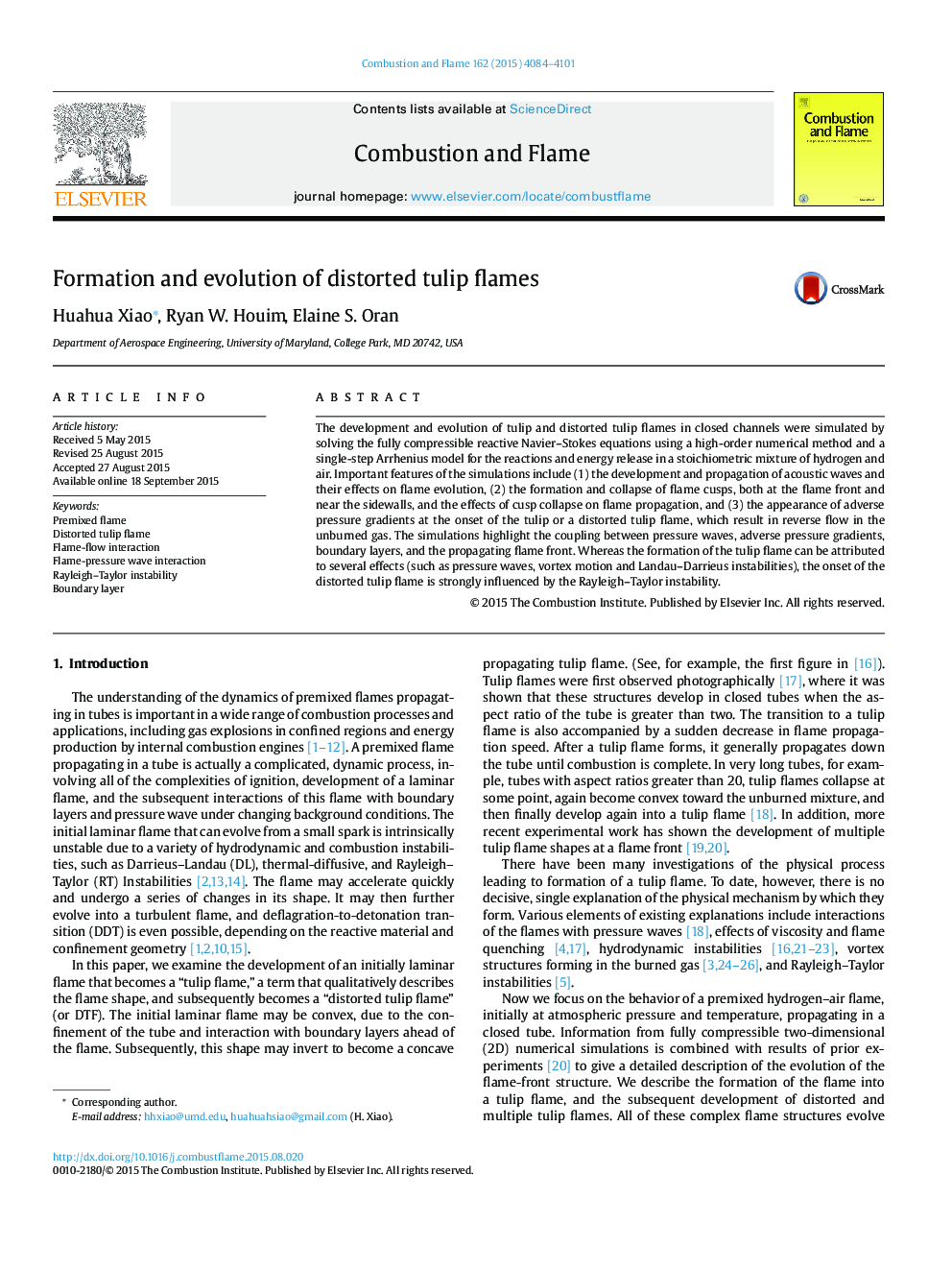| Article ID | Journal | Published Year | Pages | File Type |
|---|---|---|---|---|
| 10264355 | Combustion and Flame | 2015 | 18 Pages |
Abstract
The development and evolution of tulip and distorted tulip flames in closed channels were simulated by solving the fully compressible reactive Navier-Stokes equations using a high-order numerical method and a single-step Arrhenius model for the reactions and energy release in a stoichiometric mixture of hydrogen and air. Important features of the simulations include (1) the development and propagation of acoustic waves and their effects on flame evolution, (2) the formation and collapse of flame cusps, both at the flame front and near the sidewalls, and the effects of cusp collapse on flame propagation, and (3) the appearance of adverse pressure gradients at the onset of the tulip or a distorted tulip flame, which result in reverse flow in the unburned gas. The simulations highlight the coupling between pressure waves, adverse pressure gradients, boundary layers, and the propagating flame front. Whereas the formation of the tulip flame can be attributed to several effects (such as pressure waves, vortex motion and Landau-Darrieus instabilities), the onset of the distorted tulip flame is strongly influenced by the Rayleigh-Taylor instability.
Related Topics
Physical Sciences and Engineering
Chemical Engineering
Chemical Engineering (General)
Authors
Huahua Xiao, Ryan W. Houim, Elaine S. Oran,
